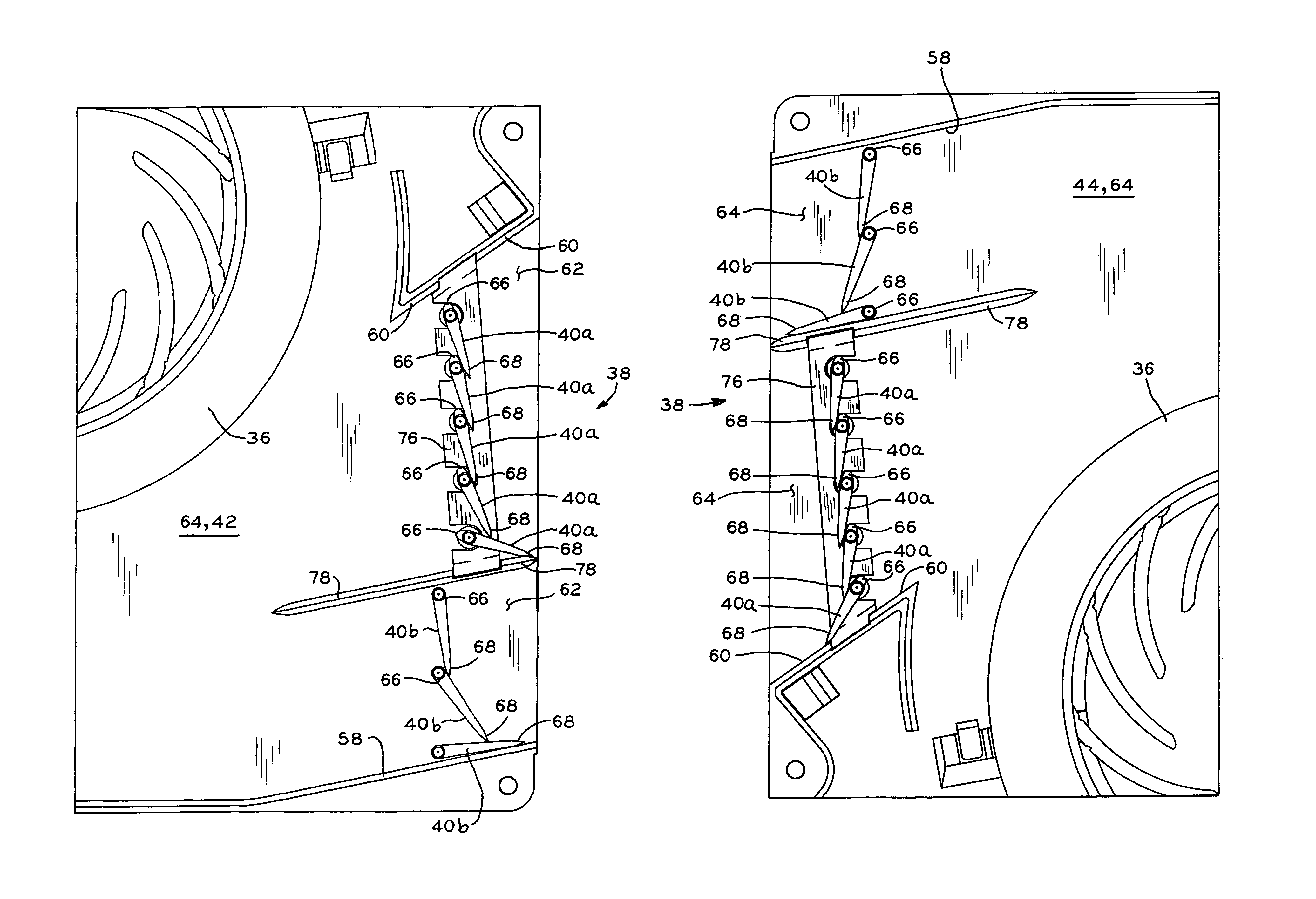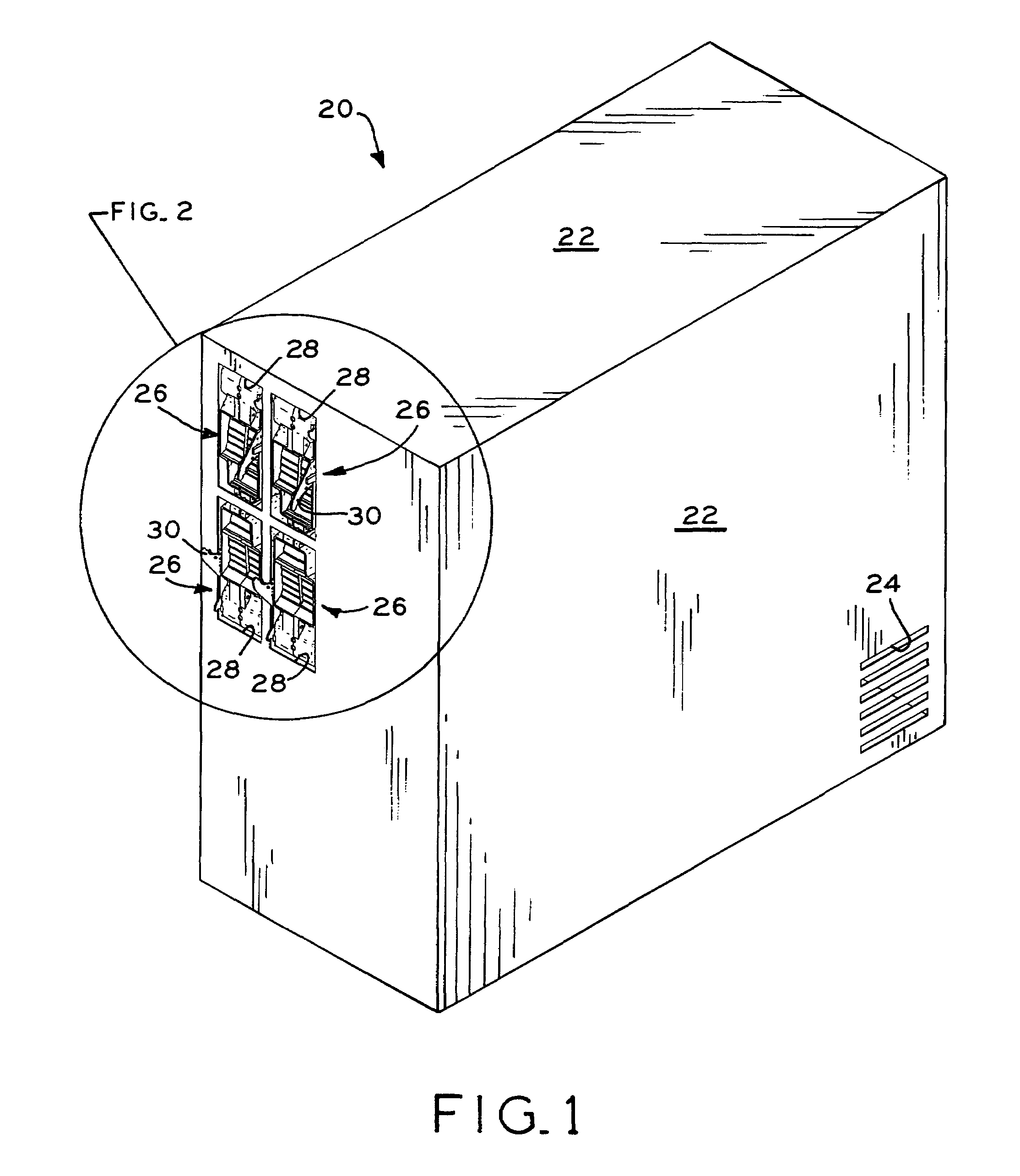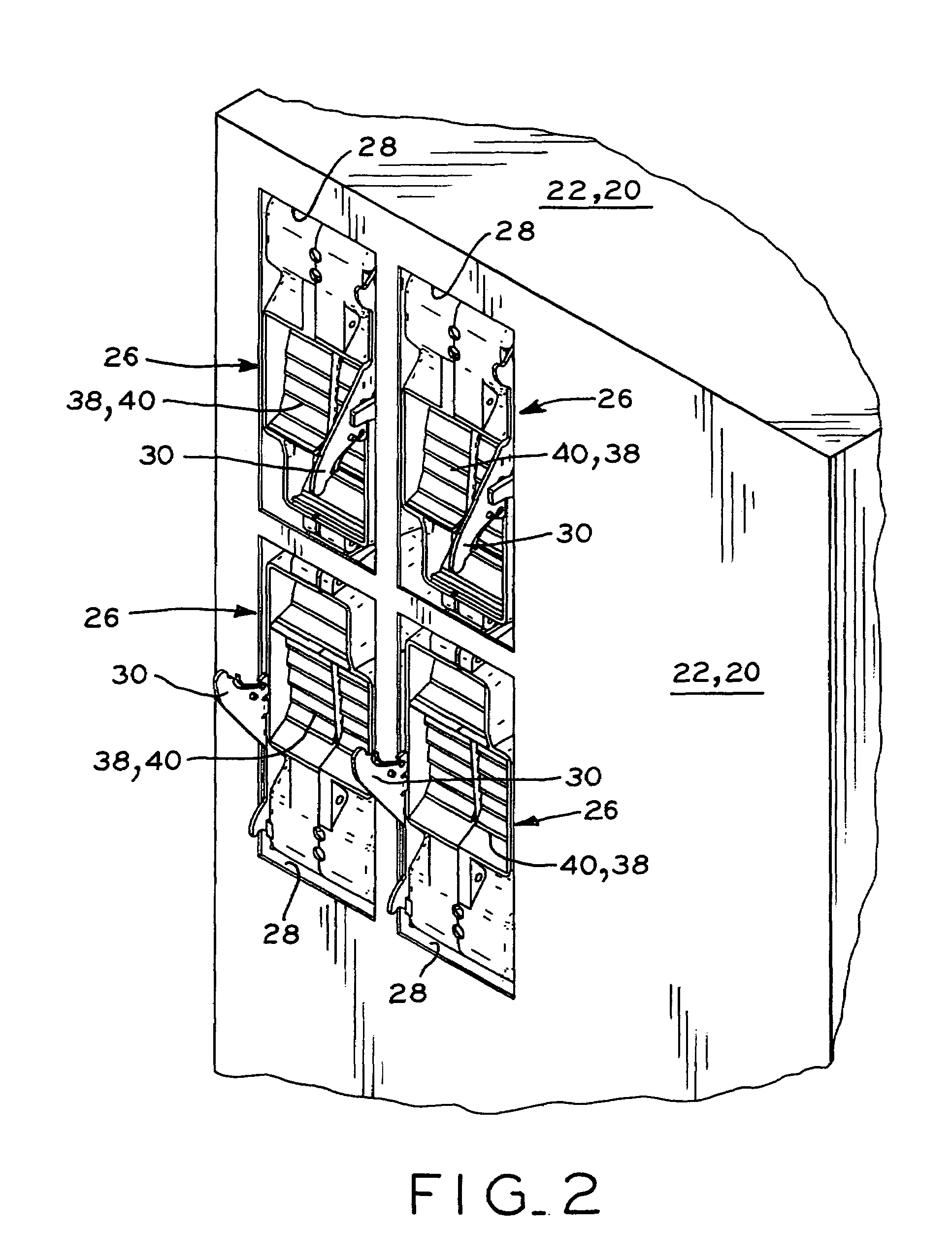Anti-reverse flow mechanism for centrifugal blowers
a centrifugal blower and reverse flow technology, which is applied in the direction of wind motors with parallel air flow, wind motors with perpendicular air flow, liquid fuel engine components, etc., can solve the problems of additional operational strain on the remaining operating blower, reducing the effectiveness of the cooling of the internal components of the machine,
- Summary
- Abstract
- Description
- Claims
- Application Information
AI Technical Summary
Benefits of technology
Problems solved by technology
Method used
Image
Examples
Embodiment Construction
[0033]Referring to FIG. 1, electrical machine 20 is shown, which may be a computer server, for example, or any other machine which includes a housing having internal electrical components such as circuit boards and electric motors, for example, which generate heat during operation and must therefore be cooled by a flow of cooling air through the machine while the machine is operating. Machine 20 generally includes a box-shaped housing 22 having a cooling air inlet 24, which is shown in FIG. 1 in the form of a plurality of slots in housing 22. A plurality of blowers 26, four of which are shown in FIGS. 1 and 2, are mounted within corresponding blower cavities 28 in housing 22 of machine 20. Latches 30 are pivotally mounted to blowers 26, and releasably engage cooperating latching structure (not shown) disposed within blower cavities 28 to secure and lock blowers 26 within blower cavities 28 of machine 20. Although blowers 26 are sized and adapted to be inserted within blower cavities...
PUM
 Login to View More
Login to View More Abstract
Description
Claims
Application Information
 Login to View More
Login to View More - R&D
- Intellectual Property
- Life Sciences
- Materials
- Tech Scout
- Unparalleled Data Quality
- Higher Quality Content
- 60% Fewer Hallucinations
Browse by: Latest US Patents, China's latest patents, Technical Efficacy Thesaurus, Application Domain, Technology Topic, Popular Technical Reports.
© 2025 PatSnap. All rights reserved.Legal|Privacy policy|Modern Slavery Act Transparency Statement|Sitemap|About US| Contact US: help@patsnap.com



